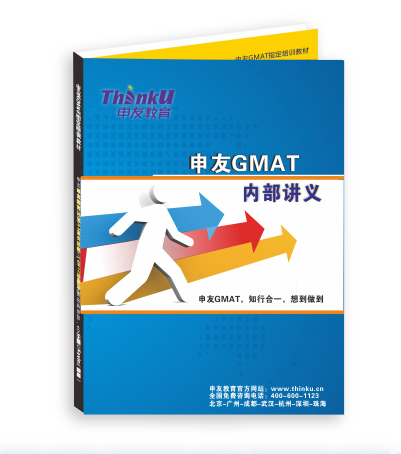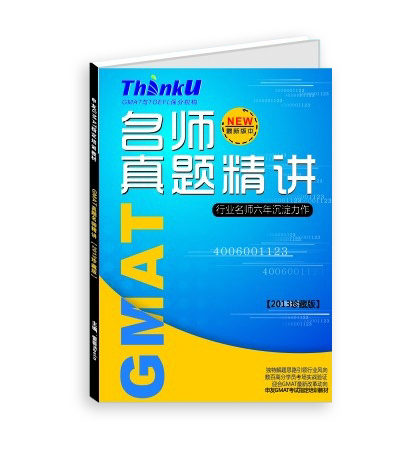Official25 托福阅读 Passage3 The surface of Mars文本+题目原文+答案解析【雷哥托福】
2019-03-01 11:38:39 发布 来源:雷哥托福TPO25 托福阅读 Passage3 The surface of Mars文本+题目原文+答案解析
The surface of Mars
The surface of Mars shows a wide range of geologic features, including huge volcanoes-the largest known in the solar system-and extensive impact cratering. Three very large volcanoes are found on the Tharsis bulge, an enormous geologic area near Mars’s equator. Northwest of Tharsis is the largest volcano of all: Olympus Mons, with a height of 25 kilometers and measuring some 700 kilometers in diameter at its base. The three large volcanoes on the Tharsis bulge are a little smaller-a “mere” 18 kilometers high.
None of these volcanoes was formed as a result of collisions between plates of the Martian crust-there is no plate motion on Mars. Instead, they are shield volcanoes — volcanoes with broad, sloping slides formed by molten rock. All four show distinctive lava channels and other flow features similar to those found on shield volcanoes on Earth. Images of the Martian surface reveal many hundreds of volcanoes. Most of the largest volcanoes are associated with the Tharsis bulge, but many smaller ones are found in the northern plains.
The great height of Martian volcanoes is a direct consequence of the planet’s low surface gravity. As lava flows and spreads to form a shield volcano, the volcano’s eventual height depends on the new mountain’s ability to support its own weight. The lower the gravity, the lesser the weight and the greater the height of the mountain. It is no accident that Maxwell Mons on Venus and the Hawaiian shield volcanoes on Earth rise to about the same height (about 10 kilometers) above their respective bases-Earth and Venus have similar surface gravity. Mars’s surface gravity is only 40 percent that of Earth, so volcanoes rise roughly 2.5 times as high. Are the Martian shield volcanoes still active? Scientists have no direct evidence for recent or ongoing eruptions, but if these volcanoes were active as recently as 100 million years ago (an estimate of the time of last eruption based on the extent of impact cratering on their slopes), some of them may still be at least intermittently active. Millions of years, though, may pass between eruptions.
Another prominent feature of Mars’s surface is cratering. The Mariner spacecraft found that the surface of Mars, as well as that of its two moons, is pitted with impact craters formed by meteoroids falling in from space. As on our Moon, the smaller craters are often filled with surface matter-mostly dust-confirming that Mars is a dry desert world. However, Martian craters get filled in considerably faster than their lunar counterparts. On the Moon, ancient craters less than 100 meters across (corresponding to depths of about 20 meters) have been obliterated, primarily by meteoritic erosion. On Mars, there are relatively few craters less than 5 kilometers in diameter. The Martian atmosphere is an efficient erosive agent, with Martian winds transporting dust from place to place and erasing surface features much faster than meteoritic impacts alone can obliterate them.
As on the Moon, the extent of large impact cratering (i.e. craters too big to have been filled in by erosion since they were formed) serves as an age indicator for the Martian surface. Age estimates ranging from four billion years for Mars’s southern highlands to a few hundred million years in the youngest volcanic areas were obtained in this way.
The detailed appearance of Martian impact craters provides an important piece of information about conditions just below the planet’s surface. Martian craters are surrounded by ejecta (debris formed as a result of an impact) that looks quite different from its lunar counterparts. A comparison of the Copernicus crater on the Moon with the (fairly typical) crater Yuty on Mars demonstrates the differences. The ejecta surrounding the lunar crater is just what one would expect from an explosion ejecting a large volume of dust, soil, and boulders. [▊] However, the ejecta on Mars gives the distinct impression of a liquid that has splashed or flowed out of crater. [▊] Geologists think that this fluidized ejecta crater indicates that a layer of permafrost, or water ice, lies just a few meters under the surface. [▊] Explosive impacts heated and liquefied the ice, resulting in the fluid appearance of the ejecta.[▊]
TPO25托福阅读 Passage3 The surface of Mars 题目
Question 1 of 14: The word “enormous” in the passage is closest in meaning to
A Important
B Extremely large
C Highly unusual
D Active
Question 2 of 14: According to paragraph 1, Olympus Mons differs from volcanoes on the Tharsis bulge in that Olympus Mons
A Has more complex geologic features
B Shows less impact cratering
C Is taller
D Was formed at a later time
Question 3 of 14: The word “distinctive” in the passage is closest in meaning to
A Deep
B Complex
C Characteristic
D Ancient
Question 4 of 14: According to paragraphs 1 and 2, which of the following is NOT true of the shield volcanoes on the Tharsis bulge?
A They have broad, sloping sides
B They are smaller than the largest volcano on Mars
C They have channels that resemble the lava channels of volcanoes on Earth
D They are over 25 kilometers tall.
Question 5 of 14: The word “roughly” in the passage is closest in meaning to
A Typically
B Frequently
C Actually
D Approximately
Question 6 of 14: In paragraph 3, why does the author compare Maxwell Mons on Venus to the Hawaiian shield volcanoes on Earth?
A To help explain the relationship between surface gravity and volcano height
B To explain why Mars’s surface gravity is only 40 percent of Earth’s
C To point out differences between the surface gravity of Earth and the surface gravity of Venus
D To argue that there are more similarities than differences between volcanoes on different planets.
Question 7 of 14: Which of the sentences below best expresses the essential information in the highlighted sentence in the passage? Incorrect choices change the meaning in important ways or leave out essential information.
A Although direct evidence of recent eruptions is lacking, scientists believe that these volcanoes were active as recently as 100 million years ago.
B Scientists estimate that volcanoes active more recently than 100 years ago will still have extensive impact cratering on their slopes.
C If, as some evidence suggests, these volcanoes erupted as recently as 100 million years ago, they may continue to be intermittently active.
D Although these volcanoes were active as recently as 100 million years ago, there is no direct evidence of recent or ongoing eruptions.
Question 8 of 14: The word “considerably” in the passage is closest in meaning to
A Frequently
B Significantly
C Clearly
D Surprisingly
Question9 of 14:According to paragraph 4, what is demonstrated by the fact that craters fill in much faster on Mars than on the Moon?
A Erosion from meteoritic impacts takes place more quickly on Mars than on the Moon
B There is more dust on Mars than on the Moon
C The surface of Mars is a dry desert
D Wind is a powerful eroding force on Mars
Question10 of 14: In paragraph 4, why does the author point out that Mars has few ancient craters that are less than 5 kilometers in diameter?
A To explain why scientists believe that the surface matter filling Martian craters is mostly dust.
B To explain why scientists believe that the impact craters on Mars were created by meteoroids.
C To support the claim that the Martian atmosphere is an efficient erosive agent.
D To argue that Mars experienced fewer ancient impacts than the Moon did.
Question11 of 14: According to paragraph 5, what have scientists been able to determine from studies of large impact cratering on Mars?
A Some Martian volcanoes are much older than was once thought.
B The age of Mars’s surface can vary from area to area.
C Large impact craters are not reliable indicators of age in areas with high volcanic activity.
D Some areas of the Martian surface appear to be older than they actually are.
Question 12 of 14: According to paragraph 6, the ejecta of Mars’s crater Yuty differs from the ejecta of the Moon’s Copernicus crater in that the ejecta of the Yuty crater
A Has now become part of a permafrost layer.
B Contains a large volume of dust, soil and boulders.
C Suggests that liquid once came out of the surface at the crater site.
D Was thrown a comparatively long distance from the center of the crater.
Question 13 of 14: Look at the four squares [▊] that indicate where the following sentence could be added to the passage. Where would the sentence best fit? Click on a square to add the sentence to the passage.
This surface feature has led to speculation about what may lie under Mars’s surface.
A. The ejecta surrounding the lunar crater is just what one would expect from an explosion ejecting a large volume of dust, soil, and boulders.
B. However, the ejecta on Mars gives the distinct impression of a liquid that has splashed or flowed out of crater.
C. Geologists think that this fluidized ejecta crater indicates that a layer of permafrost, or water ice, lies just a few meters under the surface.
D. Explosive impacts heated and liquefied the ice, resulting in the fluid appearance of the ejecta.
Question 14 of 14: Directions: An introductory sentence for a brief summary of the passage is provided below. Complete the summary by selecting the THREE answer choices that express the most important ideas in the passage. Some sentences do not belong in the summary because they express ideas that are not presented in the passage or are minor ideas in the passage. This question is worth 2 points.
Volcanoes and impact craters are major features of Martian geology.
A Plate motion on Mars, once considered to have played no role in shaping the planet’s surface, is now seen as being directly associated with the planet’s earliest volcanoes.
B Mars has shield volcanoes, some of which are extremely tall because of the planet’s low surface gravity.
C Although the erosive power of the Martian atmosphere ensures that Mars has fewer craters than the Moon does, impact craters are prominent on Mars’ s surface.
D Scientists cannot yet reliably estimate the age of the Martian surface because there has been too much erosion of it. E Scientists have been surprised to discover that conditions just below the surface of Mars are very similar to conditions just below the surface of the Moon F Studies of crater ejecta have revealed the possibility of a layer of permafrost below the surface of Mars.
TPO25托福阅读Passage3 The surface of Mars 真题解析
Question 1 of 14
正确答案:B
解析:enormous 巨大的,所以正确答案是B,extremely large。如果不认识,将答案代入原文, 原文说在T这个地方有三座非常大的火山,定语从句修饰说T是个什么样的地区,能容 下三座大火山的当然是很大的地方。A重要、C不寻常和D活跃都不靠谱。
Question 2 of 14
正确答案:C
解析:注意问的是Olympus M,以这个词做关键词定位至第三句,讲O是最大的,所以正确答案只能是C,比较高,如果不确定可以往下看到最后一句,说三个大的跟O比起来要小点儿,也说明O比较大,其他答案都没说。
Question 3 of 14
正确答案:C
解析:distinctive 有特点的,不同的,所以正确答案是 characteristic,dis作为前缀,有分或者 否定之意,所以猜出 distinctive 有不同的意思,这道词汇题代入原文不靠谱,因为几个错误答案带进去也说得通,大家还是抓紧背单词吧。
Question 4 of 14
正确答案:D
解析:以A的 broad, sloping sides 做关键词定位至第二段第二句的破折号后,正确,不选;B选项的 smaller 定位至第一段尾句,正确,不选;C的channel 定位至第二段第三句,正确,不选;D 的数字定位至第一段倒数第二句,但25说的是O,而不是shield volcano, 所以D错,是答案。
Question 5 of 14
正确答案:D
解析:roughly大概,所以正确答案是D的 approximately,代入原文,说火星的 gravity 只有地球的 40%,因此火星上山的高度应该大致是地球的 2.5倍,其他代入都说不通。
Question 6 of 14
正确答案:A
解析:以Maxwell为关键词定位至第三段第四句,这句只是在比较,于是往前看,说gravity越低,高度越高,所以作者进行这个比较无外乎想证明这个结论,所以正确答案 A。C稍有迷惑性,但C的问题在于没有提及高度,只是单纯说不同 planet之间gravity的关系,错。
Question 7 of 14
正确答案:C
解析:提出主干,没有证据,但是如果 blabla,有些火山至少 intermittently活跃,完全重复这 个意思的只有C,A 后半句的比较错,那句话事实上是条件;B同样因为比较排除;D强调的点与原文相反。
Question 8 of 14
正确答案:B
解析:considerably相当地,显著地,程度大地,所以正确答案是 significantly,consider 做考 虑讲大家都知道,也就是说这个词至少应该被译为值得考虑的,所以可以得出B, frequently 说不通;clearly 只表示清楚,没法表示程度;surprisingly 带有主观色彩,同样不沾边。
Question 9 of 14
正确答案:D
解析:以craters fill in much faster on Mars than on the Moon 定位至最后一句,说Martian atmosphere是erosive 的,风搬运尘土并擦掉撞击留下的痕迹,所以正确答案是D。
Question 10 of 14
正确答案:C
解析:跟9题是同一题,定位至倒数第二句后,发现整个句子是个例子,然后看前句,发现同样是个例子,然后看后一句,就是第9题的那句话就可以找到答案 C 。
Question 11 of 14
正确答案:B
解析:细节题,studies of large impact cratering on Mars 定位至首句,说是age indicator,但遗憾的是,凭这句只能排除 C,所以这道题只能读完这段,还好不长,答案在第二句,说南部和火山地区的不一样,也就是B说的不同地方age不同。
Question 12 of 14
正确答案:C
解析:以Yuty做关键词定位至三五两句,第五句说火星的是液体,所以正确答案是C,第四句说月亮的ejecta是dust,soil and boulders,但问题问的是火星,所以答案不是B。
Question 13 of 14
正确答案:B
解析:本来应该找代词 this surface feature 的,但这个词太抽象,所以没法定位,放弃;而且 Mar's surface 也不好,只能用动词变来的名词 speculation 做过渡点,同义词是原文的 think,所以正确答案非B即C,从逻辑上讲,应该先有导致 speculation,再有 speculation 是什么,所以正确答案是B不是C。
Question 14 of 14
正确答案:BCF
解析:Plate motion 选项没有原文与之对应,尽管第二段提及了 plate motion,但跟选项说的 根本不是 一回事儿,错; Mars has 选项对应原文第三段,正确 Although 选项对应第四段首尾句,正确 Scientists cannot 选项与原文第五段信息相反,错 Scientists have been 选项与原文最后一段信息相反,错 ;Studies 选项对应原文最后一段最后一部分,正确。
全套TPO阅读原文+题目文本+答案解析手册(合计1300页文档),在雷哥托福微信公众号获取
雷哥托福上课详情请咨询老师
1、请联系官方QQ:2250281936;
2、请联系官方个人微信号:toefl12345;
3、请咨询官方电话:400-6021-727;
【使用提示】
1、雷哥托福在线直播课,不限地域,全球考生均可报名参与。
2、获取更多托福信息,请关注雷哥托福微信公众号:toeflgo






 400-1816-180
400-1816-180
















































































 请填写手机号
请填写手机号










 12G备考资料
12G备考资料
 直播
直播



















 分享成功
分享成功









 托福预测|2020年1月11日&12日托福考试机经预测最全资料版!
托福预测|2020年1月11日&12日托福考试机经预测最全资料版!
























草莓小菇凉:说的非常好,十分有道理,棒棒棒!
06-08 15:44:55